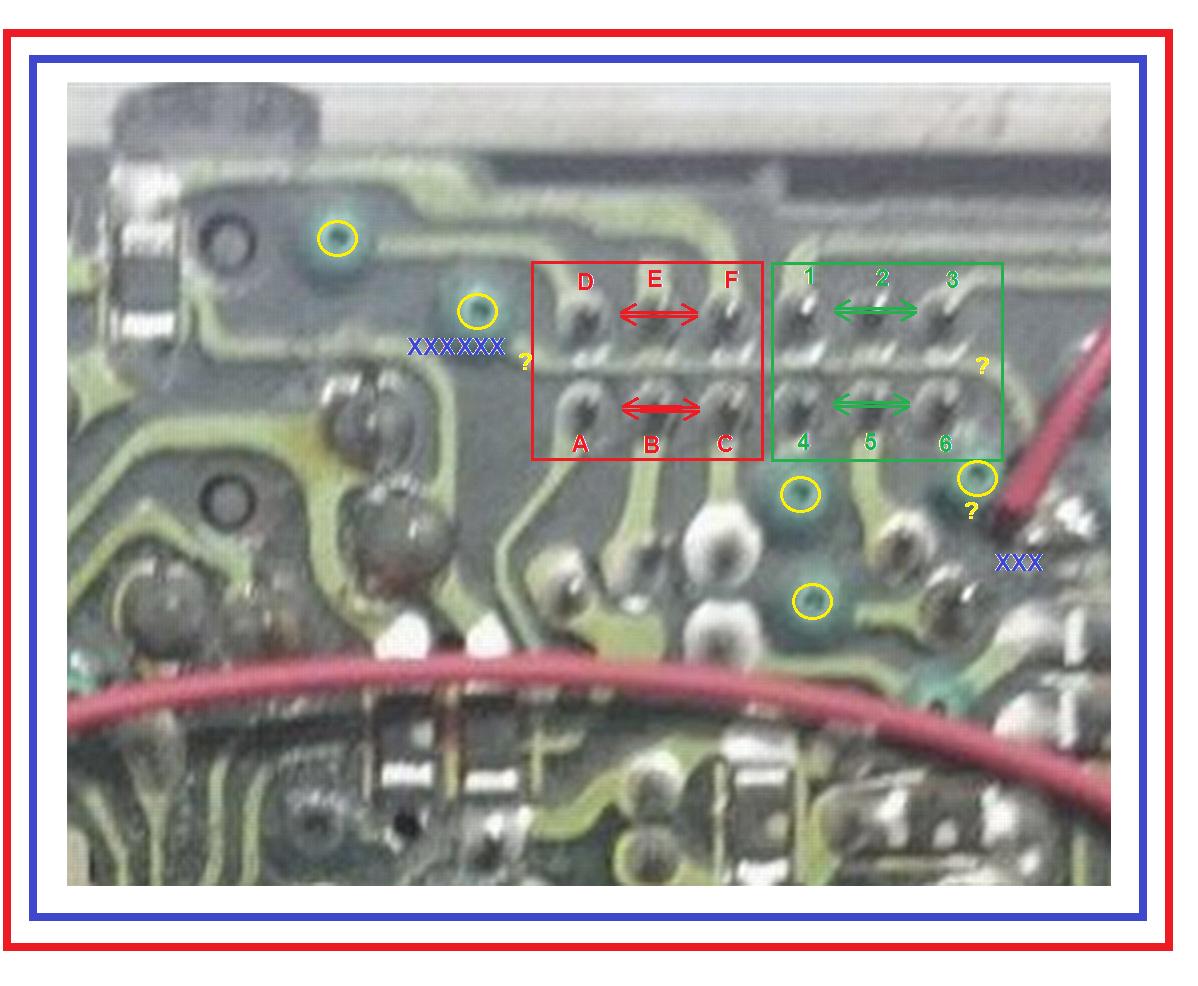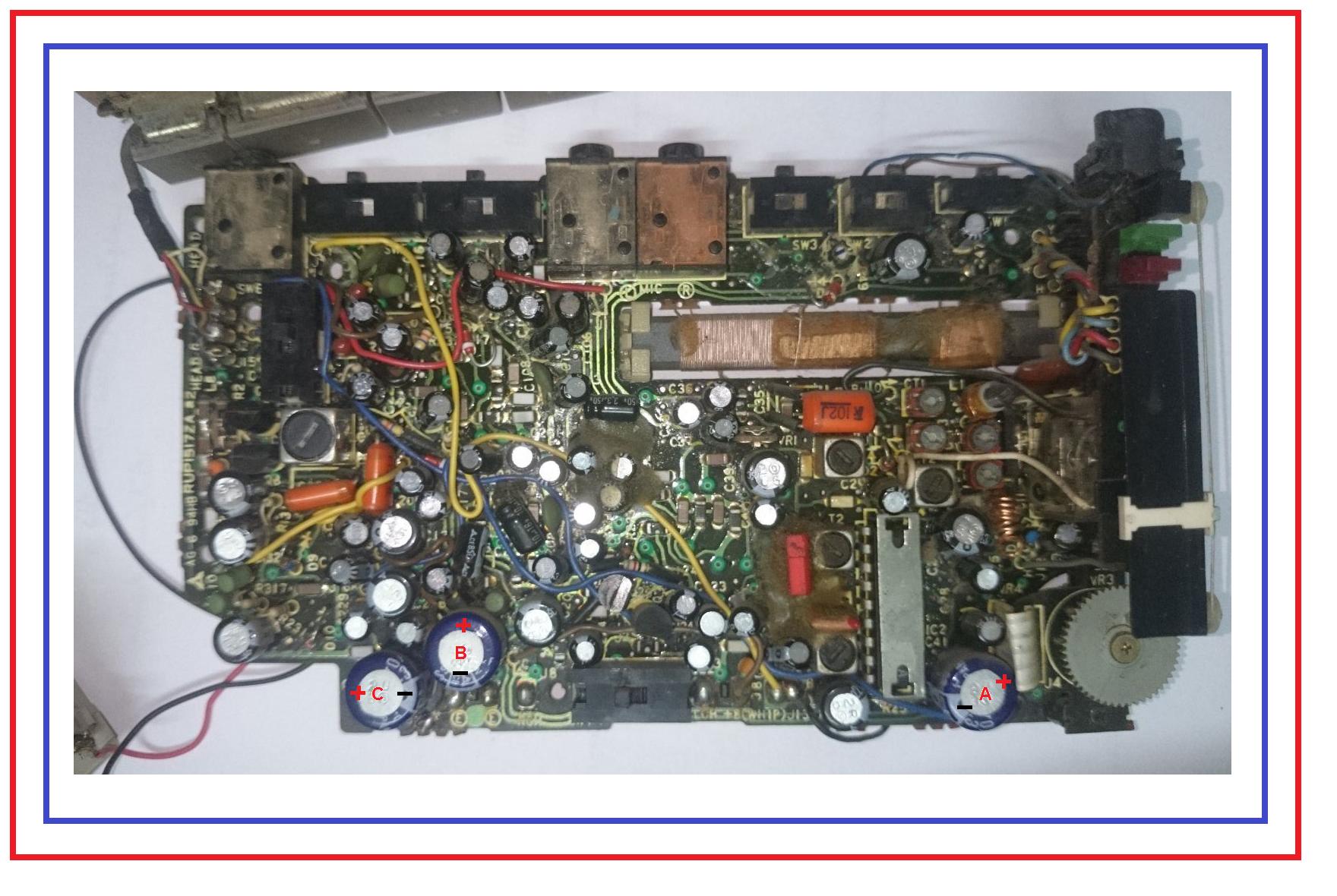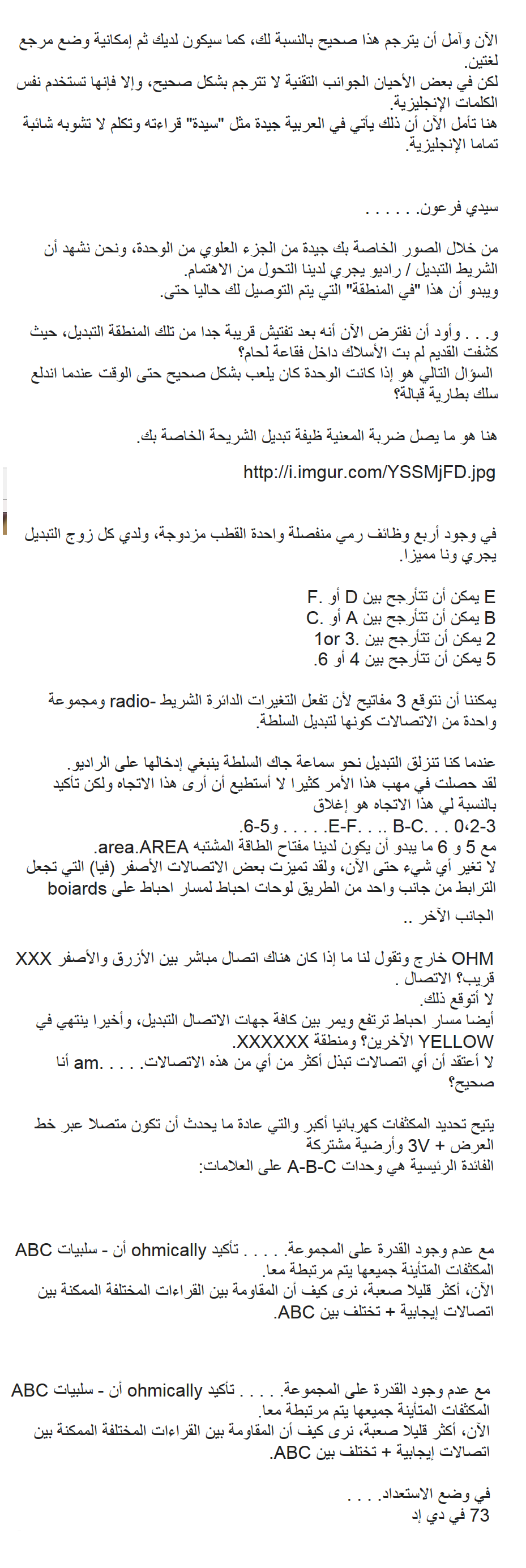.
Sir pharaon . . . . . .
By your good photo of the top of the unit , we are seeing that the the Tape /Radio switch is being our switch of interest.
And that seems to be " in the area" which you are currently hooked up to.
AND . . . I might now assume that after a VERY close inspection of that switch area, it revealed old no wire bits within a solder blob ?
Next question is if the unit was playing properly up to the time when the battery wire broke off ?
Here is a blow up of your concerned slide switch function.
Its having four separate single pole double throw positions, I have each switch pair being color coded.
E can swing between D or F.
B can swing between A or C.
2 can swing between 1or 3.
5 can swing between 4 or 6.
We can expect 3 switches to be doing tape -radio CIRCUIT changes and one set of contacts being for power switching.
When we slide out switch towards the earphone jack power should be made to the radio.
I've got this blown up so much I can't see that direction but confirm for me that direction is closing
E-F . . .. B-C . . . .2-3 . . . . .and 5-6.
With 5 and 6 seeming to be our suspect power switch area.AREA.
Don't CHANGE anything yet, as I have marked up some YELLOW connections (vias) that are making interconnections from one side of the boards foil path to a foil path on the boiards other side..
OHM out and tell us if there is a direct connection between BLUE XXX and the nearby YELLOW ? connection .
I don't expect it.
Also the foil path goes up and passes between all of the switch contacts and finally ends up at the other YELLOW ? and the XXXXXX area.
I do not believe that any connections are being made over to any of those contacts . . . . .am I correct ?
Lets locate larger electrolytic capacitors which are typically going to be connected across the + 3V supply line and a common ground
Main interest are units A-B-C on the markup:
With no power to the set . . . . .confirm ohmically that the - negatives of ABC electrolytic capacitors are all being connected together.
Now, a bit more tricky, see how the resistance between the different possible readings between the + positive connections vary between ABC.
Standing by . . . .
73's de Edd
.
![DSC_0655[1].JPG](/forums/data/attachments/23/23080-fb29aca9d45acc30615ed90153e2f64d.jpg)
![DSC_0656[1].JPG](/forums/data/attachments/23/23081-e46666733c2e5ec1a6c4ec5aa439ba57.jpg)
![DSC_0657[1].JPG](/forums/data/attachments/23/23082-66152cee9295c6ffb9db871507d875ec.jpg)


![DSC_0674[1].JPG](/forums/data/attachments/23/23216-b9c16c04775ea582379497321785d2ff.jpg)






